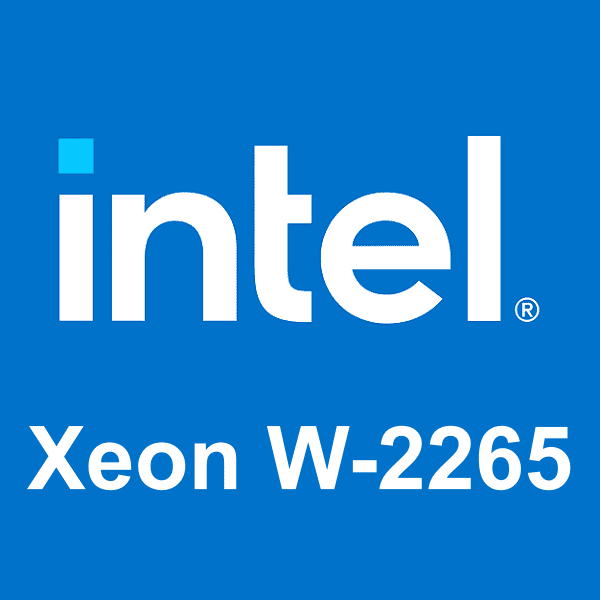Graphic Card Intense Tasks bottleneck calculator
Intel Xeon W-2265 and NVIDIA TITAN V
Graphic Card Intense Tasks
1680 × 1050
1 monitor
1. Select purpose
Currently selected:

Graphic Card Intense Tasks
2. Select processor
Currently selected:
Intel Xeon W-2265
3. Select graphic card
Currently selected:
NVIDIA TITAN V
4. Select resolution
Currently selected:
1680 × 1050 resolution
(1 monitor)
Calculation result
Bottleneck percentage
When configuring a high-performance computing setup, it's imperative to ensure that each hardware component is well-matched with its counterparts to provide seamless and optimal system performance. In the case of the Intel Xeon W-2265 and NVIDIA TITAN V in the Graphic Card Intense Tasks with 1680 × 1050 and 1 monitor, it appears that hardware compatibility has been achieved superbly, as evidenced by the calculated bottleneck percentage of 0%.

To elaborate, a bottleneck occurs when one component restricts the maximum efficiency of another, leading to suboptimal performance and reduced system effectiveness. However, in this configuration, that is not a concern. Any bottleneck percentage below 5% is generally deemed insignificant, and our current bottleneck value sits at 0%, which means you can expect superior system performance.
Processor and graphic card utilizations
In a computing setup featuring the Intel Xeon W-2265 and NVIDIA TITAN V, under the context of Graphic Card Intense Tasks with a screen resolution of 1680 × 1050 and 1 monitor, the processor is expected to have an utilization rate of 83.1%, while the graphics card is projected to be utilized at 75.6%.
It's crucial to understand that these figures signify theoretical maximums based on typical CPU-to-GPU workload distribution ratios for certain tasks or gaming experiences. Achieving these high levels of utilization in real-world settings can be a challenging endeavor.

Playability
- Playable
- Frames per second
-
A game is considered "playable" if it can consistently run at 60 FPS on high settings. This ensures a smooth and visually appealing gaming experience free from lags or stutters.
Heatmap of bottleneck
The heatmap serves as a graphical representation to further confirm the compatibility between the Intel Xeon W-2265 and NVIDIA TITAN V. On this heatmap, the x-axis corresponds to the CPU Score, and the y-axis corresponds to the GPU Score. In a perfectly balanced system such as this, the intersection point of the Intel Xeon W-2265 and NVIDIA TITAN V will fall within the "no bottleneck zone."
The "no bottleneck zone" is an area on the heatmap where the hardware components are not only compatible but are also optimally matched to provide peak system performance. When the intersection of the CPU and GPU scores resides in this zone, it is a strong indicator that the system is balanced and will deliver excellent performance for Graphic Card Intense Tasks. The presence of both the Intel Xeon W-2265 and NVIDIA TITAN V in this zone confirms that neither component will hinder the performance of the other, leading to a seamless and highly efficient computing experience.

Mapping your Intel Xeon W-2265 CPU Score against the NVIDIA TITAN V GPU Score can provide a comprehensive view of how these components interact and where bottlenecks are most likely to happen. Leveraging this heatmap data could guide you in making more balanced hardware selections suitable for your specific computing needs.
Bottleneck solutions
Replace processor
If your graphic card is causing the bottleneck but you're considering replacing your processor, reconsider this approach. Unless your processor is already on the verge of becoming outdated, upgrading it might not offer a significant performance boost, particularly in graphics-heavy tasks.
- Intel Core i7-13700K Full details
- Intel Core i9-13900 Full details
- Intel Core i7-13700KF Full details
- AMD Ryzen 9 5950X Full details
- Intel Core i7-14700F Full details
- Intel Core i7-14700 Full details
- Intel Core i9-12900KS Full details
- Intel Core i9-13900T Full details
- Intel Core i5-14600KF Full details
- Intel Core i9-12900K Full details
- Intel Core i9-12900KF Full details
- AMD Ryzen Threadripper PRO 3955WX Full details
- AMD Ryzen Threadripper PRO 5945WX Full details
- AMD Ryzen 9 5900X Full details
- Intel Core i5-13600K Full details
- Intel Core i5-13600KF Full details
- Intel Core i5-14600K Full details
- Intel Core i7-13700F Full details
- Intel Core i7-13700 Full details
- AMD Ryzen 9 3950X Full details
- AMD Ryzen 7 7700X Full details
- Intel Core i9-12900F Full details
- AMD Ryzen 7 7800X3D Full details
- Intel Core i7-12700K Full details
- AMD Ryzen 7 7700 Full details
- Intel Core i7-12700KF Full details
- Intel Core i5-14600 Full details
- AMD Ryzen Threadripper PRO 3945WX Full details
- Intel Xeon w5-3435X Full details
- Intel Xeon w5-2465X Full details
- AMD EPYC 7452 Full details
- AMD EPYC 8224P Full details
- AMD EPYC 7542 Full details
- AMD EPYC 7402 Full details
- Intel Xeon Gold 6526Y Full details
- AMD EPYC 73F3 Full details
- AMD EPYC 7313P Full details
- Intel Xeon Gold 6338N Full details
- AMD EPYC 7D12 Full details
- AMD EPYC 9124 Full details
- AMD EPYC 7402P Full details
- Intel Xeon W-3275M Full details
- AMD EPYC 7352 Full details
- Intel Xeon w5-2455X Full details
- AMD EPYC 7551P Full details
- AMD EPYC 7313 Full details
- Intel Xeon w5-3425 Full details
- Intel Xeon Platinum 8168 Full details
- Intel Xeon Gold 6230R Full details
- Intel Xeon Silver 4510 Full details

Impact of Changing Screen Resolution
Increasing the resolution in this scenario will only make the bottleneck worse, as the GPU will be under even more stress, leading to lower frame rates and reduced graphical quality. It won't significantly ease the load on the already underutilized processor.
Read moreReplace graphic cards
When the graphic card becomes a system bottleneck, upgrading it can provide a significant boost in performance. Opt for a card that better matches the capabilities of your processor to get a more balanced system. This will also enable you to run games and applications at higher settings, offering a vastly improved user experience.
- NVIDIA RTX A5500 Full details
- AMD Radeon RX 6750 XT Full details
- NVIDIA GeForce RTX 3060 Ti Full details
- NVIDIA GeForce RTX 4060 Full details
- AMD Radeon RX 6700 XT Full details
- NVIDIA GeForce RTX 2080 SUPER Full details
- AMD Radeon RX 6700 Full details
- NVIDIA TITAN Xp COLLECTORS EDITION Full details
- NVIDIA GeForce GTX 1080 Ti Full details
- NVIDIA GeForce RTX 2080 Full details
- NVIDIA TITAN Xp Full details
- NVIDIA GeForce RTX 2070 SUPER Full details
- AMD Radeon RX 7600 XT Full details
- AMD Radeon RX 6650 XT Full details
- NVIDIA GeForce RTX 2060 SUPER Full details
- AMD Radeon RX 6600 XT Full details
- AMD Radeon RX 5700 XT Full details
- AMD Radeon RX 5700 XT 50th Anniversary Full details
- AMD Radeon VII Full details
- NVIDIA GeForce RTX 3060 Full details
- AMD Radeon RX 7600 Full details
- NVIDIA GeForce RTX 2070 Full details
- AMD Radeon RX 7700S Full details
- NVIDIA GeForce GTX 1080 Full details
- AMD Radeon RX 6600 Full details
- NVIDIA GeForce RTX 2060 Full details
- AMD Radeon Pro W5700 Full details
- NVIDIA GeForce GTX 1070 Ti Full details
- AMD Radeon RX 5700 Full details
- AMD Radeon RX Vega 64 Full details
- NVIDIA GeForce GTX 1070 Full details
- AMD Radeon RX 5600 XT Full details
- NVIDIA GeForce GTX 980 Ti Full details
- AMD Radeon Pro WX 8200 Full details
- NVIDIA RTX A2000 Full details
- NVIDIA TITAN X Full details
- AMD Radeon RX Vega 56 Full details
- AMD Radeon Vega Frontier Edition Full details
- NVIDIA Quadro RTX 8000 Full details
- AMD Radeon PRO W6800 Full details
- NVIDIA Quadro GV100 Full details
- NVIDIA TITAN RTX Full details
- AMD Radeon PRO W7700 Full details
- NVIDIA RTX A4000 Full details
- NVIDIA Quadro RTX 6000 Full details
- NVIDIA Quadro GP100 Full details
- AMD Radeon PRO W6600 Full details
- NVIDIA Quadro RTX 5000 Full details
- NVIDIA Quadro RTX 4000 Full details
- NVIDIA Quadro P6000 Full details

Impact of Changing Screen Resolution
If your graphics card is bottlenecking the system, lowering the screen resolution will allow the card to handle data more efficiently, resulting in higher frames per second. However, it's worth noting that lower resolutions will require less data processing from the CPU, which could create a new bottleneck there.
Read moreBottleneck calculator types
Select purpose bottleneck calculator
Before selecting a bottleneck calculator, consider your primary computing tasks. For general activities like web browsing and office work, the calculator evaluates the balance between your CPU and GPU. If you focus on CPU-intensive tasks like video editing or 3D rendering, the tool will highlight processor performance. For GPU-centric tasks such as gaming or graphical rendering, it will assess the efficiency of your graphics card. Choose the appropriate calculator to accurately identify potential system bottlenecks for your specific use-case.
Select game bottleneck calculator
By selecting a game from the list, the calculator will analyze potential bottlenecks specifically tailored to that game's system requirements and graphical demands. This allows you to optimize your setup for a smoother, more responsive gaming experience. Choose the game that aligns with your interests to get the relevant bottleneck analysis.


































